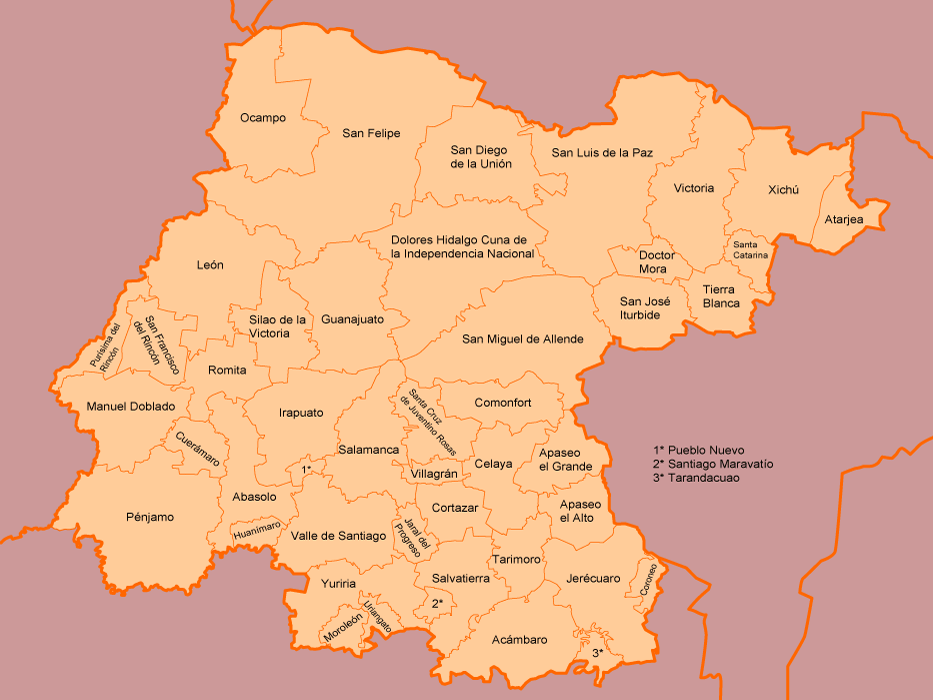 (click for larger image)
(click for larger image)
Last modified: 2025-07-18 by daniel rentería
Keywords: guanajuato | bandera municipal y escudo municipal (guanajuato) | escudo del municipio (guanajuato) | bandera del municipio (guanajuato) | héraldica municipal de guanajuato |
Links: FOTW homepage |
search |
disclaimer and copyright |
write us |
mirrors
See also:
![]() - indicates
a flag is known.
- indicates
a flag is known.
![]() - indicates it is reported there is no flag.
- indicates it is reported there is no flag.
bold
- indicates the state capital
* - indicates an official flag
| |
Each municipality in Guanajuato has its own municipal coat of arms. The surge
of adoption of local coats of arms mostly started in the '50s. The reason for
this is primarily the 200th anniversary of the birth of Don Miguel Hidalgo y
Costilla; who was to be celebrated on the anniversary of the capture of
Alhóndiga de Granaditas (28 September) the same year, a few months after his
birth. The latest surge in their adoptions occurred around the '80s and '90s,
then all municipalities started to have a coat of arms.
As for municipal flags, they are more interesting here as gonfalons are very
common throughout the state. One has adopted an official flag by law (León); another (Irapuato) uses a different color scheme other than the common
coat of arms over a white field format. Gonfalons often have a more creative
design as well; usually depicting the municipal name, with text sometimes being
in a different color, orientation, etc. I presume that the adoption of these
gonfalons was to evoke the likeness of an old Spanish municipal council.
Some of the more common themes in the creations of local municipal coats of arms
are agriculture (corn and wheat) and sometimes cattle-raising, particularly in
the southern valleys of the state where agriculture prevails. Mountains are also
frequently depicted. Gourds are also seen, recognizing the importance of water.
Municipal patron saints often recall the municipal name, usually dating back to
the colonial era when missionaries came to evangelize the people; other colonial
elements, such as helmets, can sometimes be seen. Of course, a church is
important, and so a handful have one. A handful also recognize the Indians of
the region, particularly the Chichimecas. A caduceus sometimes represents
commerce too, along with feathered hats or masks.
The most prolific of designers
in the state is the artist from Tarimoro named Manuel "Meme" Lara, designing aprox. 3 municipal coats of arms.
Daniel Rentería, 23 June 2025